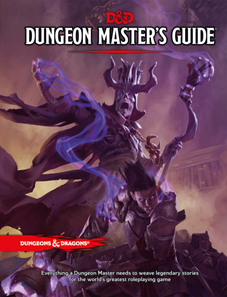 If you’re new to Dungeon Mastering D&D, the task of designing an adventure can be pretty daunting. After all, you’ve picked up Curse of Strahd or Lost Mine of Phandelver and there are lots and lots of words there. How is a beginner even going to get close to that?
If you’re new to Dungeon Mastering D&D, the task of designing an adventure can be pretty daunting. After all, you’ve picked up Curse of Strahd or Lost Mine of Phandelver and there are lots and lots of words there. How is a beginner even going to get close to that?
Well, you’re not. But then, neither am I. I’ve been doing this Dungeon-mastering gig for over 30 years, and some of my encounters are lucky to get 10 words describing them. Published adventures have a lot more detail than most home adventure notes. Why? Because the designer doesn’t know what each DM needs. So, designers try to cover all the things they think DMs will need.
Your adventure notes serve two purposes: to give you an understanding of the structure of the adventure, and to trigger inspiration when running encounters. They’re likely going to evolve as you play the game. Here’s an example from one of the encounters in a 3-year dungeon campaign I ran:
Room 5: 10 kobolds. Swinging log trap (3d6 damage, DC 13 Dex half). 200 sp.
That’s the entirety of the original description. If I were writing the adventure for publication, it might go something like this.
Room 5: The door leading into this room is trapped. When opened, a heavy log with a smiley-face drawn on it swings down at whoever is standing in the doorway. That creature must make a DC 13 Dexterity saving throw. If it fails the save, it takes 3d6 damage, or half on a successful save. The trap can be discerned with a DC 15 Intelligence (Investigation) check and disarmed with a DC 10 check with Thieves’ Tools.
In the room beyond are 10 kobolds. They attack intruders on sight, but are cowardly and will attempt to flee or surrender if half their number are slain. Their room is filthy and smelly, with many uncured animal pelts providing bedding, and gnawed-upon bones strewn haphazardly on the floor. The characters can find 200 silver pieces hidden amongst the bedding.
The kobolds know that duergar live to the east and orcs live to the west, and are afraid of both groups.
Huge difference in detail, huh?
And what’s with the smiley-face on the log? Well, that’s something that occurred to me as I was about to run the encounter in the original campaign. I described it to the players as the log swung down to hit them, and I made an annotation on the room’s description of the change. The players killed the kobolds, and were amused by the trap (except for the player whose character was hit with it). They then decided to draw a smiley-face on the door, to remind them what was in there. (And they reset the trap, to be a surprise to any other monsters who might come by).
The encounter notes now read:
Room 5: Smiley face on door. Swinging log trap (with smiley face) (3d6 damage, DC 13 Dex half). Dead kobolds.
This was part of a dungeon complex that they revisited many times over the three years of the campaign, and – at some point – the players returned to the room, saw the smiley-face they’d drawn on the door… and forgot they’d drawn it. They opened the door and were hit by the log trap. At this point, they remembered the room and that they’d reset the trap and drawn the face….
As a rule, players tend not to return to the same dungeon locations (this was a special form of dungeon known as a megadungeon, which hearkens back to the early methods of playing D&D. I’ll talk about them at a later time), but they do tend to return to their home base and meet familiar Non-Player Characters repeatedly. Use the same trick with those notes: build them up during play.
Your notes aren’t for other people to read: they’re for you to use. Put down what you can think of at the time you’re designing the adventure, then add other details later as required. You just need the key details that will allow you to run the room; you don’t need the level of adventure writing you’ll find in Curse of Strahd.
Good luck! Dungeon Mastering becomes easier as you do more of it!

I remember this room, I wasn’t there for the first time the group found it, but was for the second. It was my poor 1st level half-orc fighter-cleric that had the honour of opening the door, downing him instantly about five minutes into the game. I’m pretty sure that character was cursed though as he died 3-4 times that night, the final one being permanent thanks to the wizard casting stinking cloud the same round he went down XD.
I was going to DM Curse of Strahd but ended up playing it instead. One of the players decapitated an NPC before he could be introduced, rolling a crit on him. Even Curse of Strahd could use a bit better notation…
Great article! I would have let the players roll some kind of Int or Wis check to remember your smiley face trap. Making a difference between the player and the character reinforces the roleplay aspect and stops people thinking about the social characteristics as dump stats. You should be allowed to play a character smarter than yourself as well as one stronger…